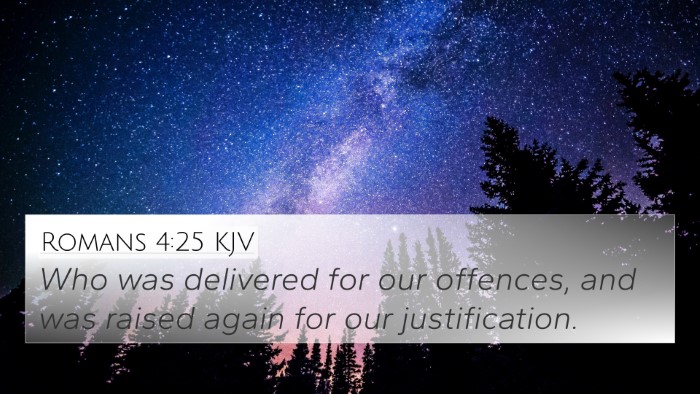The Meaning of Isaiah 53:6
Isaiah 53:6 states, "All we like sheep have gone astray; we have turned everyone to his own way; and the LORD hath laid on him the iniquity of us all." This verse encapsulates the core message of sin, repentance, and the atoning sacrifice of Christ. It highlights humanity's tendency to stray from God and the grace offered through the suffering servant.
Summary of Insights
The verse reflects a profound truth about human nature. Commentators such as Matthew Henry, Albert Barnes, and Adam Clarke provide valuable insights into its meaning and implications:
- Human Straying: The metaphor of sheep going astray signifies the waywardness of mankind. Sheep are dependent creatures, easily lost, which serves as a reminder of our need for divine guidance.
- Iniquity and Accountability: The phrase "the LORD hath laid on him the iniquity of us all" indicates the transfer of our sins onto the suffering servant, showcasing the impact of sin on the innocent. This aligns with the theme of substitutionary atonement.
- Universal Sinfulness: The declaration that "we have turned everyone to his own way" underlines the universal nature of sin, emphasizing that all have sinned and are in need of redemption (Romans 3:23).
- Divine Intervention: God's initiative in laying our iniquities on Christ demonstrates His mercy and willingness to restore the relationship between Him and humanity.
Cross-References for Deeper Understanding
To fully appreciate the depth of Isaiah 53:6, we can look at several related scriptures:
- Romans 3:22-24: Addresses the righteousness of God that comes through faith in Jesus Christ to all who believe.
- 1 Peter 2:24: Speaks of Christ bearing our sins in His body on the tree.
- John 10:11: "I am the good shepherd: the good shepherd giveth his life for the sheep," emphasizing Christ's sacrificial role.
- Matthew 8:17: Refers to Jesus taking our infirmities and bearing our diseases.
- Isaiah 53:5: Enforces the central theme of Christ bearing afflictions for our transgressions and bruises for our iniquities.
- Luke 19:10: Highlights Christ's purpose in seeking and saving the lost.
- Hebrews 9:28: Discusses Christ's second coming and the ultimate bearing of sins for believers.
Thematic Connections
Isaiah 53:6 serves as a pivotal verse in understanding the biblical themes of:
- Sin and Atonement: It presents a clear portrayal of humanity's sin and God's provision for atonement through Christ's suffering.
- Redemption: Through the acknowledgment of our waywardness, redemption becomes available to all who turn back to God.
- Messianic Prophecy: This verse is a critical declaration of the suffering servant who fulfills the messianic prophecy, establishing the profound link between the Old Testament expectations and New Testament fulfillment.
Conclusion
Isaiah 53:6 serves as a powerful reminder of the nature of sin and the divine mercy offered through Jesus Christ. This verse resonates with the overall narrative of Scripture, where the themes of sin, redemption, and God's grace converge. Whether through a Bible concordance or specific cross-reference Bible study, Isaiah 53:6 is crucial for understanding the connections between different Bible verses and the overarching message of the Gospel.
Related Study Tools
In studying Isaiah 53:6 and its connections, consider utilizing:
- Bible cross-reference guide: For exploring thematic connections and understanding the narrative flow.
- Bible reference resources: To facilitate deeper study and cross-analyzations.
- Cross-referencing Bible study methods: For effective personal or group studies.
With these insights, scholars and casual readers alike can appreciate the depth and richness of Isaiah 53:6 and its abiding relevance in the study of Bible verses that relate to each other.















